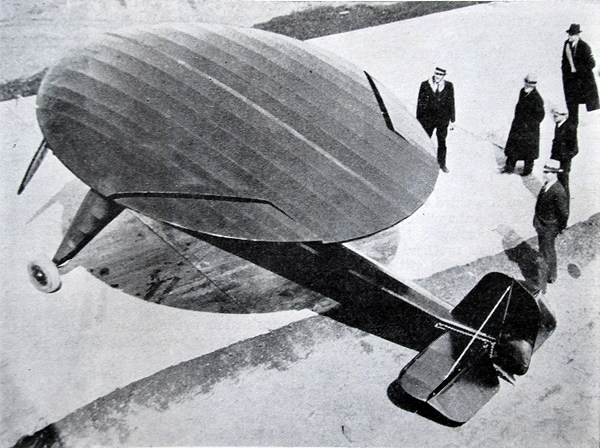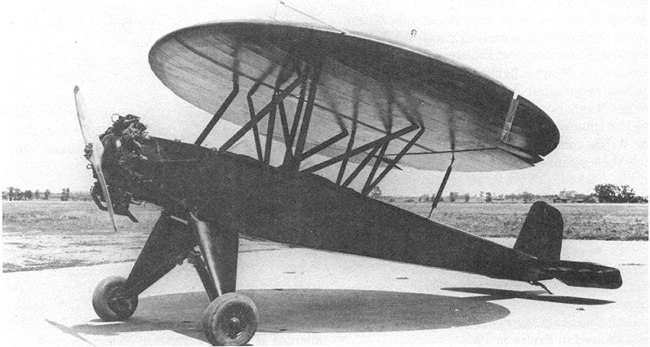Parachute Plane
Apparently this thing did fly. It was designed by Steven Nemeth in the early 1930s. He boasted that it was so simple to fly that a person who had never been off the ground could learn to fly it in 30 minutes. Plus, it could be housed in a hangar not much larger than an average garage.
There was only one prototype ever made, and it's not clear why the plane was never developed further. Disciples of Flight speculates that "the design’s low aspect ratio wing may have meant a lot of additional drag."


There was only one prototype ever made, and it's not clear why the plane was never developed further. Disciples of Flight speculates that "the design’s low aspect ratio wing may have meant a lot of additional drag."

Newsweek - Mar 31, 1934

Comments
My first thought was: "Wow, a pre-war AWACS!" Then I thought of the Talon(?) aircraft in Stealth (2005) (great plane designs, terrible movie).
I suspect one reason it didn't get developed further was the 1930s/1940s focused on military aircraft, and this would have been a beautiful target.
I suspect one reason it didn't get developed further was the 1930s/1940s focused on military aircraft, and this would have been a beautiful target.
Posted by Phideaux on 09/11/17 at 11:33 AM
Good ideas eventually get their day in the sun - this will come back in twenty years as the Frisbee.
NASA once considered another low-aspect wing design to land the Mercury and Gemini spacecraft on hard surfaces, known as the Rogallo Wing. It lives on today as the modern paraglider or hang glider.
NASA once considered another low-aspect wing design to land the Mercury and Gemini spacecraft on hard surfaces, known as the Rogallo Wing. It lives on today as the modern paraglider or hang glider.
Posted by KDP on 09/11/17 at 02:14 PM
I've built several RC planes with disc wings. Plenty of lift, draggy but no more so than most biplanes. The real issue with them is a narrower range of speeds, and very little roll stability. They want to rock back and forth like a pendulum, which is pretty unpleasant.
There are millions of shapes that can be made to fly, but straight-wing designs with a conventional tail always end up being most efficient once you consider everything a plane needs to do, including flying slowly for takeoff and landing, cruising efficiently at high speeds, and handling adverse weather or winds, especially near the ground.
There are millions of shapes that can be made to fly, but straight-wing designs with a conventional tail always end up being most efficient once you consider everything a plane needs to do, including flying slowly for takeoff and landing, cruising efficiently at high speeds, and handling adverse weather or winds, especially near the ground.
Posted by Old Whitebelly on 09/15/17 at 09:52 AM
Commenting is not available in this channel entry.



Category: Air Travel and Airlines | 1930s